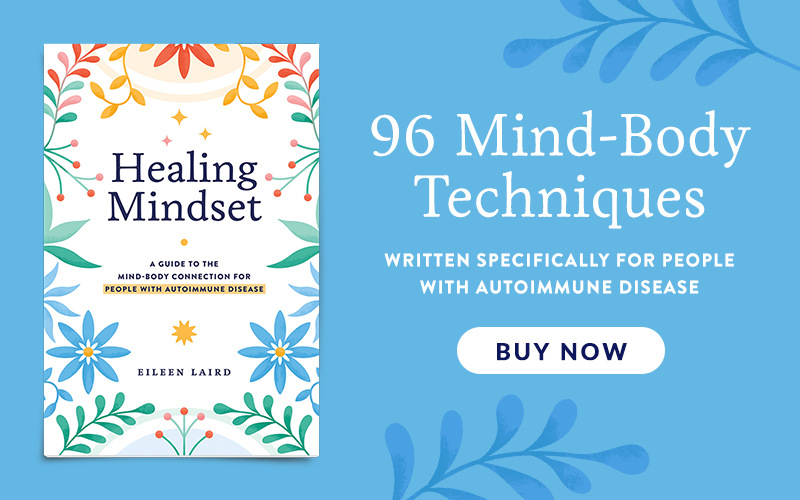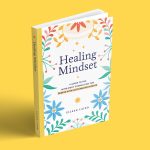“The man who removes a mountain begins by carrying away small stones.”
~ Chinese proverb
1. Get out in the sunshine.
There’s a reason many of us feel happier on sunnier days! Sunshine boosts dopamine and seratonin, two neurotransmitters that greatly impact mood. Dopamine is often called the “feel good hormone”, because it’s associated with feelings of euphoria, motivation, and improved concentration. Who wouldn’t want more of that? And prescription anti-depressants work by increasing seratonin levels. So, if you feel sadder and less energetic on cloudy days, or during the winter when days are short, this might be one reason why. If the sun is shining, get outside, no matter the season. What if it’s cloudy or raining? Light therapy can have a similar effect. Choose a therapy lamp designed for this purpose, which emits 10,000 lux of light and filters out UV light. Use it for 20 to 40 minutes in the morning shortly after waking. Position it at a slight angle, at eye level or slightly higher, about two feet from your face. Keep your eyes open, but don’t look directly at the light. This is the one I use: Verilux HappyLight.
2. Move your body.
Exercise is a natural anti-depressant. This can be a little ironic, because when we’re depressed, we often don’t want to get out of bed. But if you can push through that resistance, it’s common to feel better immediately after exercising, and those benefits accrue if exercise becomes a regular part of your life. How does it work? Exercise increases compounds that improve brain function, like seratonin, BDNF, endorphins, and endocannabinoids. What type of exercise is most beneficial? This will vary based on your current level of health. The right exercise reduces inflammation and stress, but overexercise can do the opposite. So, do some experimentation to find the exercise that works best for you. Start gently. The most important thing is to get moving. For inspiration, listen to these two podcasts: Exercise and Autoimmune Disease Part 1 and Part 2.
3. Eat a nutrient-dense snack.
Blood sugar fluctuations also have a big impact on mood. When we eat a balanced meal, our blood sugar slowly rises, and then slowly descends until it’s time for our next meal. Ideally, the food fuels our body with no negative impact. However, both stress and high-carbohydrate meals can cause blood sugar to spike and then crash. During the spike, we feel a brief mood boost, but the payment is worse than the reward. The sugar crash intensifies feelings of depression, anxiety, and irritability. Here’s the conundrum: when we’re sad, scared, or angry, it’s tempting to reach for “comfort food” in the form of sweets. In this community, that might be AIP desserts. They’re fine on special occasions, but when we eat them every day, particularly by themselves as a snack, they put us on a blood sugar rollercoaster. If you feel yourself becoming irritable, choose a snack that contains both healthy fat and protein. Not only is this satiating, but it’s also mood-stabilizing.
4. Drink a glass of water.
The human body is interesting, because thirst signals often come in unexpected forms. Sometimes, hunger is actually a call for water. Moodiness can be as well. A research study found that mild dehydration led to moodiness, confusion, and fatigue. So, grab a glass of water, and see if that makes a difference for you. If it does, start carrying a water bottle, to support your physical and emotional health all day.
5. Breathe from your belly.
There’s quite a bit of research into the connection between breath and emotions. Joy, anger, fear, and sadness all have distinct breathing patterns. Diaphragmatic breathing (aka deep belly breathing) has been shown to decrease anxiety, depression, and feelings of emotional exhaustion. Like exercise, the benefit is both immediate and cumulative. If you haven’t practiced deep breathing before, it can be easier to begin lying down on your back. Bend your legs, so your back is relaxed. Get comfortable, and place one hand on your belly and one hand on your chest. Take a deep breath in through your nose, and let your belly push your hand up. Your chest should not move, but if it does, don’t judge yourself. With practice, you’ll be able to breathe more easily into your belly. As you exhale, breathe out through pursed lips as if you were whistling, pushing all of the air out of your belly. Repeat this 3 to 10 times. Resource: Breathing Techniques for Anxiety, Insomnia, and Fatigue.
6. Meditate.
That’s a word that strikes fear into the hearts of many people. There’s a false perception that meditation is about quieting the mind, and if we can’t do that, then we are meditation failures. I’m going to let you in on a little secret: the mind is designed to think. Asking it to stop thinking is like asking your heart to stop beating. It’s an unfair request, and it’s not the goal of meditation. Instead, meditation is about becoming aware of our thoughts and learning to detach from them, so they aren’t leading us around like puppies on a leash. Similarly, we learn to see that emotions also come and go. We can learn to be less overwhelmed by them. Research shows that meditation reduces anxiety and depression and increases equanimity (the ability to withstand the ups and downs of life with more peace). There are many different ways to meditate. Guided meditations are a great way to begin.
7. Turn toward the pain.
This is counter-intuitive, I know. When we’re hurting, it’s natural to want to run from that feeling. But ignored feelings often become stronger, as they insist on getting the attention they need. There are some powerful mind-body techniques that provide a safe structure for honoring these feelings without judgment, and loving ourselves in the midst of them. It often has the side effect of diminishing their intensity. Three such techniques are self-compassion meditation, EFT (emotional freedom technique), and the RAIN technique.
8. Turn off your smartphone.
Smartphones are amazing things, but they carry risk as well as reward. They’ve been linked to anxiety, depression, feelings of social isolation, insomnia, brain fog, the inability to concentrate, and more. At its best, social media is a fun way to connect with people worldwide. At its worst, it feeds insecurities with curated photos and a comparison game no one can win. We also use our phones to fill all the free space in our day. This is constant stimulation for our brain, which can be exhausting. So, take a break right now for 15 minutes. Put your phone in another room. Find some solitude and silence if you can. Let your mind drift. Let yourself relax. Unplugging is powerful medicine. If that felt good, listen to my podcast: What Is a Digital Detox? for 10 other experiments you can try.
9. Take a nap.
You know how babies cry when they’re tired? Adults aren’t that different. For people with autoimmune disease, sleep can be challenging. Sometimes pain keeps people awake. Other times, hormone imbalances can interfere with quality sleep. This can create a vicious cycle, because poor sleep leads to mood issues, and mood issues can also disrupt sleep. If you didn’t sleep well last night and you have the opportunity to take a power nap today, go for it. Try lying down for 20 minutes. Research shows this improves mood, whether you actually sleep or not. The rest itself seems to offer the benefit.
10. Snuggle with a person or a pet.
Oxytocin is known as the “cuddle hormone” because it releases in our bodies when we hug or snuggle. Research shows that it decreases stress, increases pain thresholds, and stimulates social bonding. The good news is that this works with people or pets, and it’s mutually beneficial – both parties get an oxytocin boost! So, if you have the opportunity, take a snuggle break today.
The connection between emotional health and autoimmune health:
So, why am I writing about mood boosts on an autoimmune health blog? Because autoimmune health embraces all levels: physical, mental, and emotional. Autoimmune flares can fill us with strong emotions alongside our physical symptoms, but did you also know that strong emotions can cause autoimmune flares? There’s a field of science called Psychoneuroimmunology. It’s all about the interaction between our thoughts, feelings, brain, and immune system.
Mood boosts can be a wonderful daily practice. Not only do they help us through our darkest moments, but they also harness the anti-inflammatory power of the mind-body connection. That said, I don’t want to give the impression that the goal is to eliminate all challenging emotions. Grief, sadness, fear, and anger are all part of the human experience. I also want to honor the truth that sometimes these mood boosts aren’t going to be enough. There are times when emotions are so overwhelming that we don’t have the ability to follow through on these suggestions, or if we do, their impact is blunted. If you are in this situation right now, you don’t have to go it alone. Professional guidance can be a life saver.
When it comes to autoimmune health, we always talk about addressing root causes. The same is true for mental and emotional health. Counseling is one of the most effective supports. Other areas to explore include the gut-brain connection, hormone imbalances, and past traumas. We are complex human beings, and there’s often many layers to healing.
You May Also Be Interested In
Credit: image at top of page from Pexels.











Eileen, this is so helpful, thank you! And I’d like to suggest a little more food for thought: I read this piece and was very struck by it. If you have a chance, I think it’s well worth a read. http://www.bimblings.co.uk/2020/03/15/inside-a-guide
What a beautiful piece. I’ll be sharing it on Facebook. Thanks, Quinn!
Happy to share. I posted about it – with a link – on my blog as well 🙂